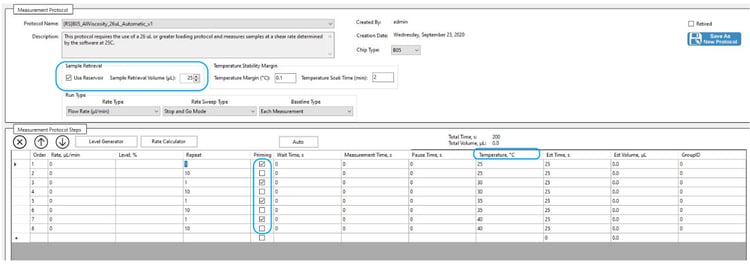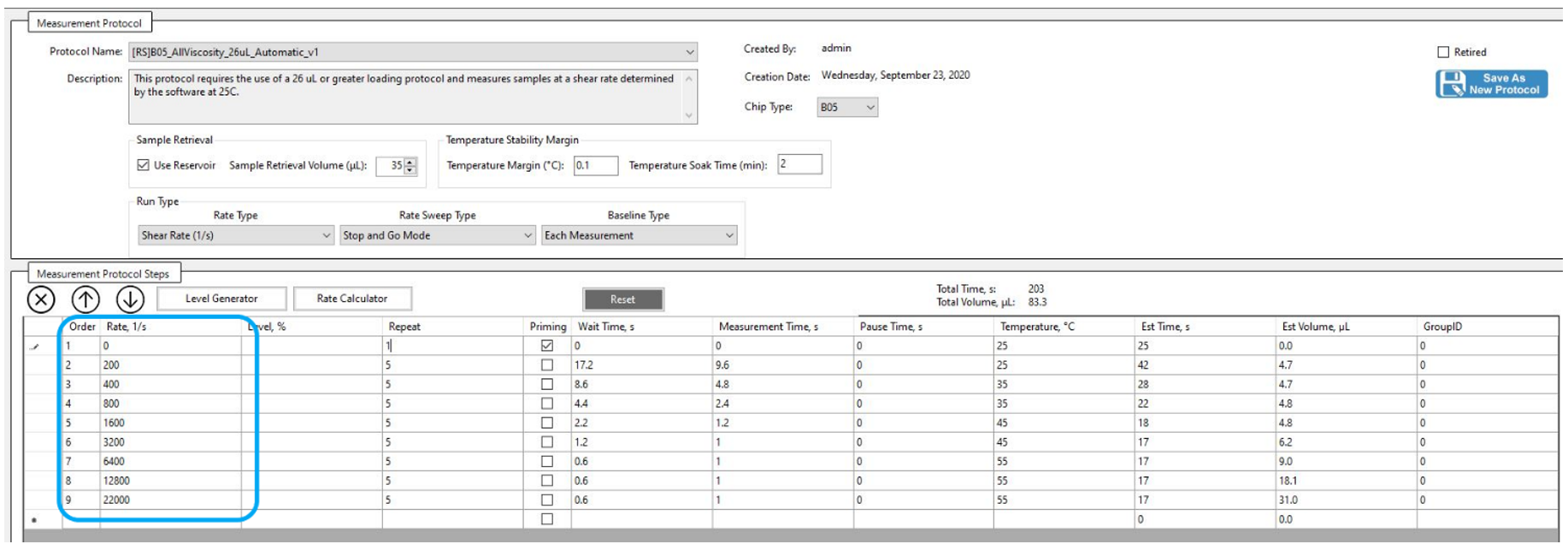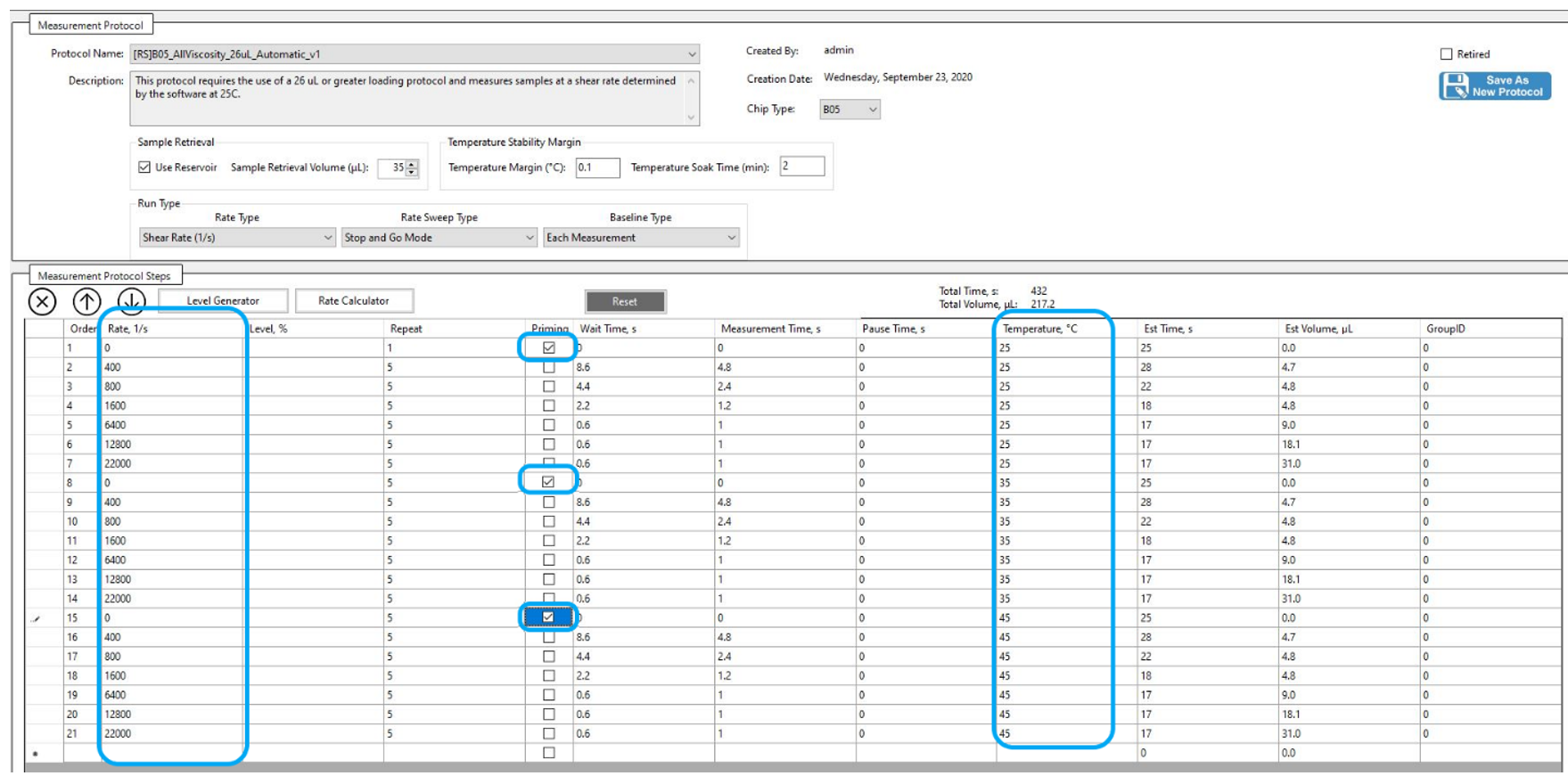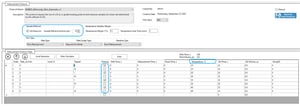The RheoSense VROC® initium one plus is the leading automated high-throughput viscometer!. The VROC initium one plus offers the ability to perform different types of measurements with little volume of sample (as little as 26µL)! Whether you need to perform a shear rate sweep, temperature sweep, or both, the VROC initium one plus has it covered.
With a minimum of 50 µL of sample loaded into a vial, you can run a shear rate sweep on almost the full range of the instrument. The shear rate range you can run will be dependent on your sample viscosity and chip type. For our A05, B05, and C05 the shear rate range will be anywhere from 40 s-1 to 24,000 s-1. For E02 you can achieve shear rates up to 140,000 s-1 depending on your sample viscosity.
For single point viscosity measurements all you need is 26 µL of sample! If sample volume is not a problem, the max amount of sample you can use on the initium is 90 µL using positive displacement pipettes. For any other type of pipettes, load an extra 5 to 10 µL of sample. Using the max amount of sample will allow you to measure at any shear rate available.
With the same 26 µL of sample you can run a single point measurement at different temperatures using the retrieval function of the initium. Retrieval is the process of pulling sample back into the syringe after the syringe has been fully used.
The image below demonstrates how to make a protocol for a temperature sweep for a sample loading volume of 26 µL. Make sure to have the check box for “Use Reservoir” under the “Sample Retrieval” section and the “Sample Retrieval Volume” set to at least 25 µL. This will work only for Newtonian samples.

For Non-Newtonian samples, pick the same flow rate/ shear rate to run the temperature sweep. A higher volume loading protocol may be required to perform the temperature sweep. See below an example of a non-Newtonian temperature sweep! The flow rate chosen may not work for all samples depending on the viscosity and loaded volume.

Whether you are measuring a Newtonian or Non-Newtonian fluid, it is best practice to always have one priming step whenever you are changing temperature in the measurement protocol. This is to make sure that the wetted materials in the flow channel and chip are uniform.
For shear rate sweeps, we can vary the shear rate/ flow rate row by row. For high shear rate measurements, make sure to use at least a 50 µL loading protocol. Make sure to have Sample Retrieval active for shear rate sweeps as well. For 50 µL loading protocols, make sure to set the sample retrieval volume to 38 µL. For 90 µL loading protocols, set the sample retrieval volume to 70 µL. This will allow you to measure at high shear rates without running out of sample during the measurement. Below is an example of a shear rate sweep protocol.

Now that we have covered shear rate sweeps and temperature sweeps, let’s look below on how a combination of shear rate sweep and temperature sweep would look like for 3 different temperatures.
From the image below we can see the different tips we applied to make the combo sweep. Always remember to prime the measurement step when temperature changes.

Any measurements that are not a single point viscosity measurement will vary in time. Temperature sweeps do take time to reach and stabilize whenever there is a change in temperature. For shear rate sweeps, low shear rates will also take some time because of the decrease in flow rate.
Contact us to learn more about the measurement capabilities of the VROC initium one plus, or to discuss protocol development for your samples and applications!
Written by: Daymian Villapudua, RheoSense Field Service Engineer



